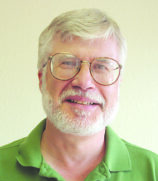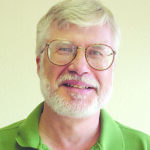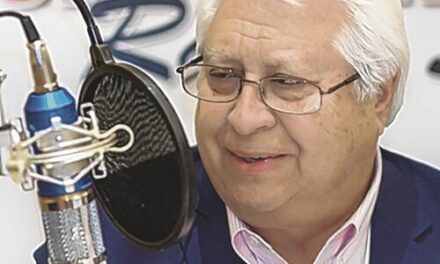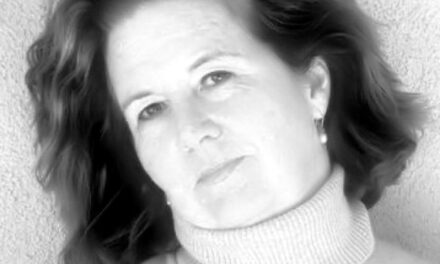The Dallas Cowboys were not always America’s team. When they first played in the early 1960s, they had few fans in Dallas or anywhere else in the United States, including New Mexico.
They drew so few fans to their home games that it was said a person could go deer hunting in their home stadium because the odds of finding deer in the Cotton Bowl were better than finding fans. If there was a prize for mediocrity, the Cowboys deserved it.
But the Cowboys had more problems than their lack of success on the field. The team played in Dallas, one of the most segregated cities in the country. Black players like Don Perkins, Mel Renfro and Bob Hayes faced racism everywhere they turned in the city. Early teams in the 1960s couldn’t even find motels for their black players to stay in with the rest of the team on the night before home games.

Richard Melzer, Ph.D
Black players and their families were forced to live in segregated parts of Dallas. When Don Perkins would call a real estate agent to see an apartment that was listed for rent all went well until they met at the apartment and, seeing Perkins, the real estate agent would announce that the apartment had already been rented to someone else.
Perkins and his black teammates were only able to rent or own sub-standard housing. Perkins told a reporter, “Do you know my wife, Virginia, and I would be embarrassed to have you visit our home in Dallas? Why? The Negroes on the Cowboys can find only roach-infested houses.”
Each night after practice, white players left in one direction, usually North Dallas, while black players went in the other direction, usually to Oak Cliff, south of the Trinity River.
Star receiver Bob Hayes remembered the day when he was in the Dallas airport waiting for his flight, wearing a suit and tie. “A well-dressed white woman came running up to me with her suitcases and said, ‘Skycap, skycap, would you please take my luggage to the counter?’ I had to set her straight: ‘Ma’am, I have a ticket like yours. I don’t work here. I work for the Dallas Cowboys.’”
Racism was hardly limited to Dallas. Hayes recalled warming up with Cowboy quarterback Don Meredith before a game in New Orleans. Hayes looked up into the stands and saw a homemade sign that showed a white player wearing the number 17 (Meredith’s) and a black player wearing the number 22 (Hayes’s). Each figure in the primitive picture wore a noose around his neck.
The Cowboy organization could also be accused of racism against its own black players. By club rules, black players could only room with fellow blacks, while white players could only room with whites. Even after the U.S. Supreme Court’s 1954 ruling against segregated schools, black players’ children attended segregated schools and usually received inferior educations.
Conditions were so bad in Dallas that the minute the last game of the season ended, black players usually loaded up their families and spent the balance of the year in other, less racist parts of the country. For Don Perkins and his family, Albuquerque was their haven.
Perkins had been an All-American football player at the University of New Mexico and had always been well received and admired in New Mexico based on who he was rather than on his skin color alone. Racism existed in Albuquerque, but nothing like it existed in the South and other regions of the United States.
With progress during the civil rights movement led by leaders like Dr. Martin Luther King Jr. conditions in Dallas and on the Cowboys team gradually improved. Dallas hotels became integrated and, thanks to a 1968 suit by Cowboy Mel Renfro, fair housing laws were eventually enforced. Don Perkins worked with the Cowboys’ management to finally change the rule that blacks could only room with other blacks.
These were major victories for football players and for every American who faced discrimination in the 1960s. But with hate crimes increasing today, the struggle against prejudice continues. Knowing this, Don Perkins spent years performing a one-man show as the famous black abolitionist, Frederick Douglass. Like Douglass, Perkins never tired of advocating for racial equality and justice.
With heroes like King, Douglass and Perkins to inspire us, we must never tire of fighting racism in every part of our lives, our community and the United States as a whole. We cannot claim that we live in a free, equal country until every citizen, regardless of race, ethnicity, gender and religion, is truly free and equal.
(The 27th annual celebration and Remembrance of Dr. Martin Luther King Jr. Community Solidarity and Candlelight Vigil will be held at 6 p.m., Monday, Jan. 20, at the Belen Public Library. The event is sponsored by the city of Belen’s Dr. Martin Luther King Jr. Mutli-Cultural Commission. Please remember and try to abide by our commission’s motto: Living the Dream; Let Freedom Ring; Building Bridges for Unity and Understanding.)

Richard Melzer, guest columnist
Richard Melzer, Ph.D., is a retired history professor who taught at The University of New Mexico–Valencia campus for more than 35 years. He has served on the board of directors of the Valencia County Historical Society for 30 years; he has served as the society’s president several times.
He has written many books and articles about New Mexico history, including many works on Valencia County, his favorite topic. His newest book, a biography of Casey Luna, was published in the spring of 2021.
Those interested in joining the Valencia County Historical Society should contact Dr. Melzer at [email protected].














